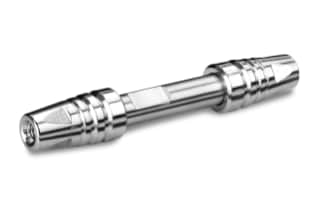
|
Chemistry |
C18 |
|
Separation Mode |
Reversed Phase |
|
Particle Substrate |
Silica |
|
pH Range Min |
2 pH |
|
pH Range Max |
8 pH |
|
Temperature Limits |
45 C |
|
Maximum Pressure |
18000 psi (1240 Bar) |
|
Endcapped |
Yes |
|
Silanol Activity |
Low |
|
Particle Shape |
Spherical |
|
Particle Size |
2.7 µm |
|
Endfitting Type |
Parker-style |
|
Pore Size |
90 Å |
|
Format |
Column |
|
Surface Area |
100 |
|
System |
HPLC |
|
Particle Technology |
Solid Core |
|
USP Classification |
L1 |
|
Inner Diameter |
4.6 mm |
|
Length |
50 mm |
|
Carbon Load |
6.6 % |
|
UNSPSC |
41115709 |
|
Brand |
CORTECS |
|
Product Type |
Columns |
|
Units per Package |
1 pk |
What Are The Operational Settings For The CORTECS C18 Column?
The CORTECS C18 Column is best operated below the following maximum operational settings: pressure of 18000 psi (or 1240 Bar), a pH range of 2 - 8 pH, and a maximum temperature of 45 Degrees Celsius. While it is possible to operate up to the limits described above, kindly note that it can damage your column and reduce its lifetime and performance significantly.
Describe Resolution From Perspective Of Chromatography?
Resolution is a function of peak width and retention time, both of which are inherent properties of the chromatographic process; by using resolution measurements, chromatographers are able to optimize their sample separations.